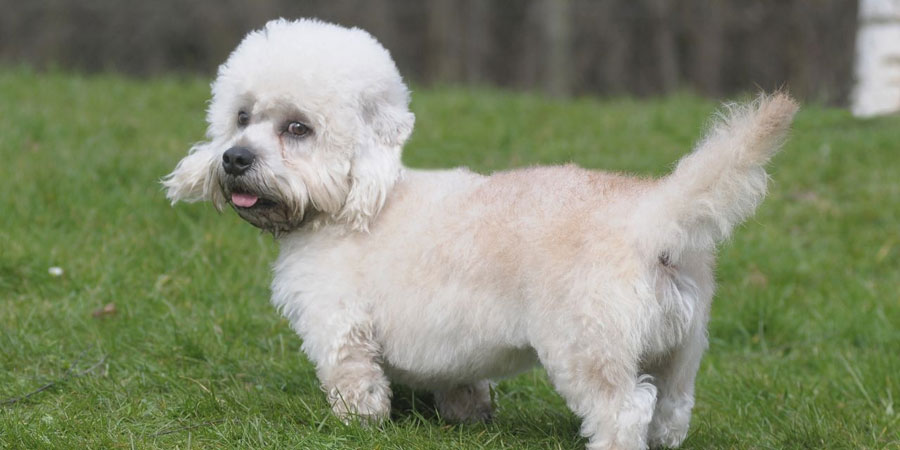

Dandie, Hindlee Terrier
Overview
Unlike the prototypical terrier, the Dandie is made up of a series of curves, topped off with a long, scimitar-shaped tail. It is almost twice as long as tall, constructed to go to ground after tough quarry. Its hind legs are definitely longer than its front legs. Its gait is free and easy. It has a distinctive coat made up of about two-thirds hardish (not wiry) hair and one-third soft hair, about 2 inches in length. The head is covered with soft, silky hair, lending to the appearance of a large head. The topknot also enhances the expression, which is determined, dignified, soft and wise.
The Dandie Dinmont is no "dandified" dog; it is rough-and-tumble and ready for the hunt. Yet it functions well as a dignified house pet, affectionate but not doting. It is a loyal companion suitable for people of all ages, but it does need daily exercise to keep it from becoming frustrated. It is intelligent and very independent. It tends to be reserved with strangers and aggressive toward strange dogs. Some dig.
| Size | Small |
| Height | 8-11 inches (20-28 cm) |
| Weight | 18-24 pounds (8-11 kg) |
| Lifespan | 12-14 years |
| Colors | Gray Silver White Yellow |
| Origin | United Kingdom |
| Classification | Purebred |
| Good Lapcat |
| Good In Apartments |
The Dandie Dinmont Terrier is good for apartment life. They are fairly active indoors and a small yard will do as long as you take them for daily walks. Likes to chase, be careful when taking them off the leash. |
| Good With Children |
Good with Kids: This is a suitable breed for kids and is known to be playful, energetic, and affectionate around them. |
| Good With Dogs |
|
| Good With Cats |
|
| Exercise Needs |
Dandie Dinmonts need to be walked daily. They will also enjoy sessions of play in the park or other safe open areas. |
| Trainability |
Moderately Easy Training: Although it can be stubborn, training is not difficult. |
| Affectionate |
|
| Playfulness |
|
| Grooming Requirements |
Moderate Maintenance: The Dandie Dinmont Terrier has a unique look that requires regular grooming. His coat must be scissored and shaped every four to six weeks to maintain its distinctive appearance. A professional groomer familiar with the breed can do that for you, or you can learn to trim the coat yourself. |
| Shedding |
Minimal Shedding: This dog will shed a negligible amount. Recommended for owners who do not want to deal with dog hair in their cars and homes. |
| Vocalization/Barking |
Occassional |